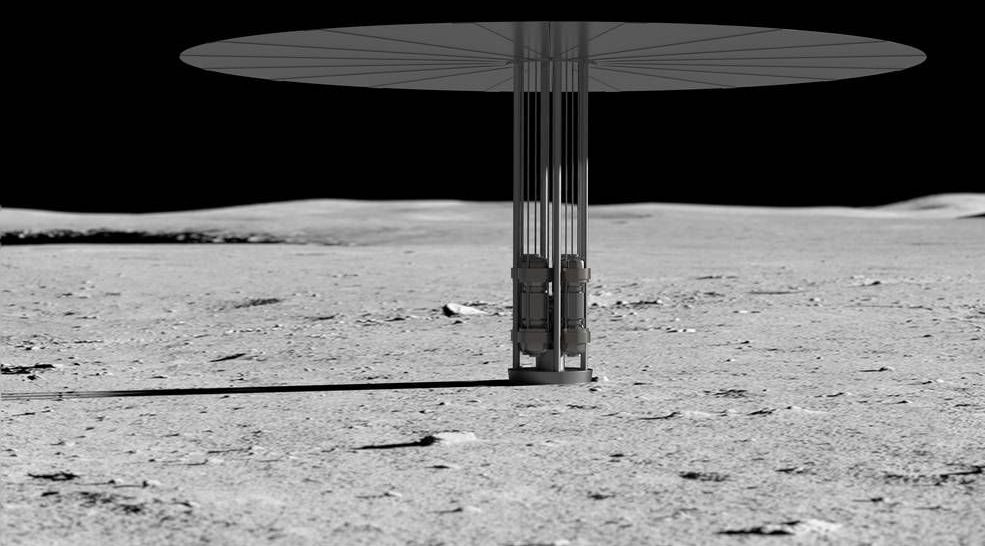A new nuclear fission project, called Kilopower, could fuel the future of spaceflight, manifesting a dream that’s been around since the beginning of the Space Age.


Spacecraft and satellites could in future be launched into space without the need for fuel, thanks to a revolutionary new theory.
Dr Mike McCulloch, from the University of Plymouth, first put forward the idea of quantised inertia (QI) – through which he believes light can be converted into thrust – in 2007.
He has now received $1.3million from the United States Defense Advanced Research Projects Agency (DARPA) for a four-year study which aims to make the concept a reality.

Feeding knowledge directly into your brain, just like in sci-fi classic The Matrix, could soon take as much effort as falling asleep, scientists believe.
Researchers claim to have developed a simulator which can feed information directly into a person’s brain and teach them new skills in a shorter amount of time, comparing it to “life imitating art”.
They believe it could be the first steps in developing advanced software that will make Matrix-style instant learning a reality.

A ten-year-old beagle with prostate cancer is helping researchers at The University of Queensland use nanomedicines to accurately diagnose and target the disease.
Hoover is the first patient in the world to receive the nanomedicine, which the research team hopes will help track and treat his cancer, and lead to better treatment for people with the same disease.
Nanomedicine is the science of developing tiny particles for applications in health — in this case therapeutics to specifically target a protein found in prostate cancer.

IMAGE: The internet of things (IoT) is allowing scientists to optimize laboratory operations and combine instruments to measure and respond to complex experimental conditions. As a result, IoT is enabling more… view more
Credit: SLAS Technology

The building blocks of matter in our universe were formed in the first 10 microseconds of its existence, according to the currently accepted scientific picture. After the Big Bang about 13.7 billion years ago, matter consisted mainly of quarks and gluons, two types of elementary particles whose interactions are governed by quantum chromodynamics (QCD), the theory of strong interaction. In the early universe, these particles moved nearly freely in a quark-gluon plasma. Then, in a phase transition, they combined and formed hadrons, among them the building blocks of atomic nuclei, protons and neutrons.
In the current issue of Nature, an international team of scientists has presented an analysis of a series of experiments at major particle accelerators that sheds light on the nature of this transition. The scientists determined with precision the transition temperature and obtained new insights into the mechanism of cooling and freeze-out of the quark-gluon plasma into the current constituents of matter such as protons, neutrons and atomic nuclei. The team of researchers consists of scientists from the GSI Helmholtzzentrum für Schwerionenforschung in Darmstadt, and from the universities of Heidelberg and Münster (Germany), and Wroclaw (Poland).
A central result: The record-breaking high-energy experiments with the ALICE detector at the Large Hadron Collider (LHC) at the research center CERN produced matter in which particles and antiparticles coexisted in equal amounts, similar to the conditions in the early universe. The team has confirmed via analysis of the experimental data theoretical predictions that the phase transition between quark-gluon plasma and hadronic matter takes place at the temperature of 156 MeV, 120,000 times higher than that in the interior of the sun.
Announcing Two Ini Postdoctoral Fellowships
Ini Fellowship in Neuroscience Research
The Iowa Neuroscience Institute ( INI ), part of the Carver College of Medicine at the University of Iowa, seeks talented postdoctoral scientists to engage in cutting-edge neuroscience research. The INI was established in January 2017, supported by a transformational $45 million grant to the University of Iowa from The Roy J. Carver Charitable Trust. Led by Director Ted Abel, Ph.D., the INI is a comprehensive and cross-disciplinary neuroscience center spanning 5 colleges and 26 departments, dedicated to finding the causes of — and preventions, treatments, and cures for — the many diseases that affect the brain and nervous system. Successful candidates will join a strong cohort of postdoctoral fellows working in the field of neuroscience, such as those participating in the NIH –funded INSPIRE program. The University of Iowa Postdoctoral Association provides a variety of social and professional development opportunities on campus.

Vector today launched a new programme to raise awareness of the need to keep trees well clear from power lines, by planting thousands more of them to launch the initiative.
The Vector Urban Forest initiative means the power company will replace every tree it must cut down for network management or safety purposes, with two new natives, planted in areas that help with local ecological restoration schemes.
“The Vector Urban Forest is a promise from Vector to plant two native seedlings where they are needed most, and far away from Auckland’s powerlines which will mean Aucklanders’ power supply is better protected”, said Andre Botha, Vector’s Chief Networks Officer.

Billionaire Paul Allen’s aerospace company says it’s exploring the development of a series of rocket planes that would serve as testbeds for hypersonic flight.